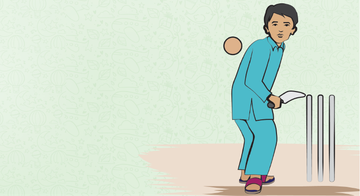
5 years
Physical Development
- Skips using alternate feet.
- Catches large balls.
- Walks backwards toe to heel.
- Climbs well and runs easily.
- Walks up and down the stairs, one foot on each step.
- Can do somersault.
- Uses a spoon to eat.
- Can use the toilet on his/her own.
Cognitive Development
- Dresses alone.
- Counts up to 10 objects.
- Copies familiar shapes (squares, circles, triangles) with pencil or crayons.
- Puts objects behind, in front of, under, back etc.
- Plays make-believe with dolls, animals and people.
- Does puzzles with 3 or 4 pieces.
- Turns book pages one at a time.
- Opens and closes or turns door handles.
- Counts 10 or more things.
- Can draw a person with at least a few body parts.
- Knows about things used everyday, like money and food.
Language Development
- Speaks clearly in simple sentences
- Can name most familiar things.
- Understands words like 'in', 'on' and 'under'.
- Says first name, age and sex.
- Names a friend.
- Says words like 'I', 'me', 'we', and 'you, and some plurals (cars, dogs, cats etc)
- Speaks very clearly for strangers to understand most of the time.
- Tells a simple story using full sentences.
- Uses future tense, for example: "Grandma will be here."
Socio-Emotional Development
- Likes playing with adults or older children.
- Copies adults and friends.
- Shows affection for friends and wants to please friends.
- Takes turns in games.
- Shows concern for a crying friend.
- Understands the idea of 'mine', 'his' or 'hers'.
- Shows a wide range of emotions.
- Separates easily from mom and dad.
- Dresses and undresses self.
- Likes to sing, dance and act.
- Shows more independence (like visiting a next-door neighbor by his/herself (adult supervision is still needed)
PLAY
- Play with the child in ways that allow for his/her physical development (e.g. organizing activities where the child has to walk, run etc)
- Expose the young child to new sights, smells and sounds.
- Teach the child stories, songs and games.
COMMUNICATE
- Praise the child and support him/her by holding his/her hand as he/she learns to walk.
- Maintain eye contact with the child while talking to and feeding the child.
- Communicate with the child (e.g. talk/sing regularly to the child, talk about pictures, read books, answer questions, praise the child etc.) including when feeding and encourage him/her to talk.
- Cuddle, hug and kiss the child to express affection.
- Talk about pictures or books.
Key Family Practices to Promote During Your Visit



